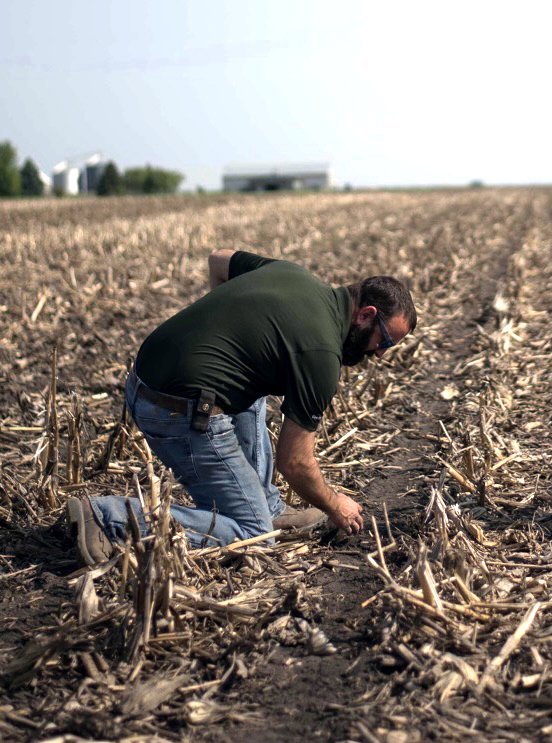SWOF Farmer Spotlight: Joe Paulson
In each Tune Up newsletter, we profile one farmer, team member, partner, or other SWOF affiliate to better understand their contribution to the program. In this edition, we’re spotlighting Joe Paulson, a SWOF farmer from Illinois. Read on to learn a bit more about Joe and why he chose to partner with us.
Joe Paulson - Full-time farmer in Northern Illinois
I am a fifth-generation farmer from Genoa, IL. In 2001, I had the privilege of returning to the farm to work alongside my grandfather and father on their 1,800 acres. Today, I run a 4,000-acre grain farm made up of rented, owned, and custom farmed acres. I also run a custom application business with a neighbor.
In 2019, I started strip-tilling as a way to lower production costs but have been pleasantly surprised and intrigued by all the side effects this conservation-minded practice has brought my fields. This recently inspired me to start working with cover crops. I was enrolled in a competitor’s program and was just plain miserable, to be honest with you. Working with SWOF has been the complete opposite. They’ve been so helpful in getting this new phase of conservation practices off the ground, through both the financial incentives and the agronomic support I have received.
Did you consider other programs? If so, what made you choose SWOF?
Yes, I was actually enrolled in a different program. I was only in my first year and got paid about 4% of what they originally promised. The way you had to report the stuff was miserable. I hated it. A client of mine told me about your program. Joe [Winchell, Field Program Lead for SWOF] came to my property and sat down in my office to go through things with me. The sign-up process was really easy. I just had to get you guys the information. Plus, you paid 10 times what the other program did.
Joe is pictured above in one of his fields enrolled in SWOF.
“If you’re looking to get into cover crops or are curious about it, SWOF is a fantastic resource to help you get started. And you get paid! It’s a win-win.”
How has our team helped you along the way, whether it’s inputting data, technical assistance with practice implementation, or monitoring and verification?
SWOF has helped with literally all of that. All the inputting was super handy. Sure, it took a couple of hours, but we got it all in. Your team also helped with selecting cover crop varieties. They made some suggestions about the best way to do things, especially to start with. And they actually send the checks.
What outcomes - financial or otherwise - have you seen from your fields after implementing SWOF-supported conservation practices?
Well, I’m in my first year here with you, the crop that I’m growing is the first one I’ve had since being in SWOF. I went all in though - I did 3000 acres - but there have been no train wrecks. I used oats, ahead of corn. This was helpful with the seeding rates, it didn’t inhabit my planting rates.
How do you hope that these efforts will help your land in the long term?
I’m confident it will help a lot with the health of the soil. I have seen that. In 2019 [when he started strip-tilling], those were the best farms that I had, highest yielding. It helps with soil erosion. Look, if you’re looking to get into cover crops or are curious about it, SWOF is a fantastic resource to help you get started. And you get paid! It’s a win-win.

